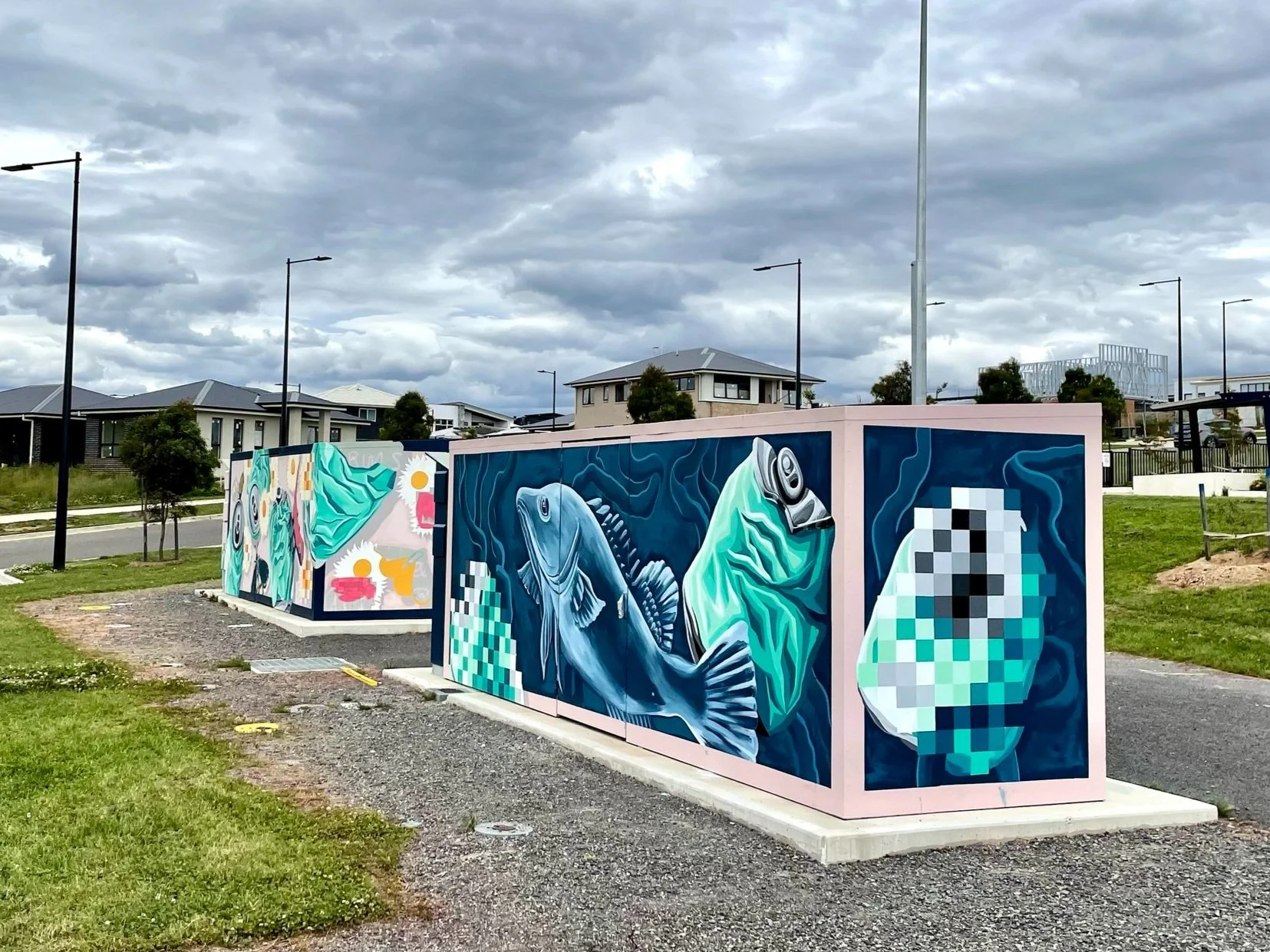Research Fellow; ANU Centre for the Public Awareness of Science - Exploring Street Art as Science Communication
Screenshot
Overview
Research Fellow for Australian National University’s Centre for the Public Awareness of Science
Co-authoring a paper titled “Street Art as a Vehicle for Environmental Communication” diving in to three of my public artworks.
Location: ANU, Canberra ACT
In 2022, I was awarded a Research Fellowship through the Australian National University’s Centre for the Public Awareness of Science - a significant recognition that deepened my connection to interdisciplinary research and creative communication. Under the mentorship of Dr Anna-Sophie Jürgens, I explored how street art and mural-making can function as powerful tools for science communication, engaging the public in environmental dialogue through visual storytelling.
The fellowship began with an interview for the Between Science and Art series:
Abstract: In this article, artist BOHIE discusses her work in the public art formats of street art, murals and fine art murals, and the messages they convey. Her work is a gentle, research-inspired representation of the natural world; inclusive with a sense of belonging, but also challenging social constructs and gender stereotypes. Through her fascination and engagement with sciences – including the science of emotions – BOHIE communicates in a kind, non-judgemental way, which inspires reverence for, and connection with, animals and the environment around us. The conversation delves into our environment, the science of emotions in street art and her collaborations with researchers and research institutions.
And led to the publication of a peer-reviewed article in the Journal of Science Communication (JCOM):
Street art as a vehicle for environmental science communication
I was also profiled by Wissenschaftskommunikation.de in an article questioning How can street art reinforce a sense for environmental issues in local communities?, reflecting on how my practice sits at the intersection of creativity, activism, and public knowledge.
This experience reshaped how I understand the role of artists in knowledge systems. It affirmed that socially engaged art (especially in public space) can be a legitimate, impactful form of science translation. The fellowship helped solidify my place within a growing field of hybrid practitioners, and continues to inform how I approach community projects, ecological storytelling, and cross-sector partnerships.
The Artworks We Unpack
The paper looks into three of my public mural works as environmental communication:
1. Inspire Growth (2022)
Commissioned by the ACT Government's NoWaste program, this mural uses playful visual metaphors (like mushrooms sprouting from coffee grounds) to link food waste, fungi, and behavioural change. Juxtaposing humour with environmental urgency, it reframes personal habits as catalysts for ecological growth.
2. In Our Hands (2021)
Created in the aftermath of the Black Summer bushfires, this collaborative mural became a visual site of healing. A young girl cradles a bandaged joey, surrounded by fire-activated native lilies - symbols of strength, regrowth, and our shared responsibility to care for Australia's wildlife and ecosystems.
3. You Choose (2022)
Painted across two water utility boxes in a new Canberra suburb, this mural poses a visual dilemma: one panel depicts local endangered species fading into pixels, while the other shows urban waste dissolving instead. Positioned near a playground, it invites reflection on impact, connection, and collective responsibility.






